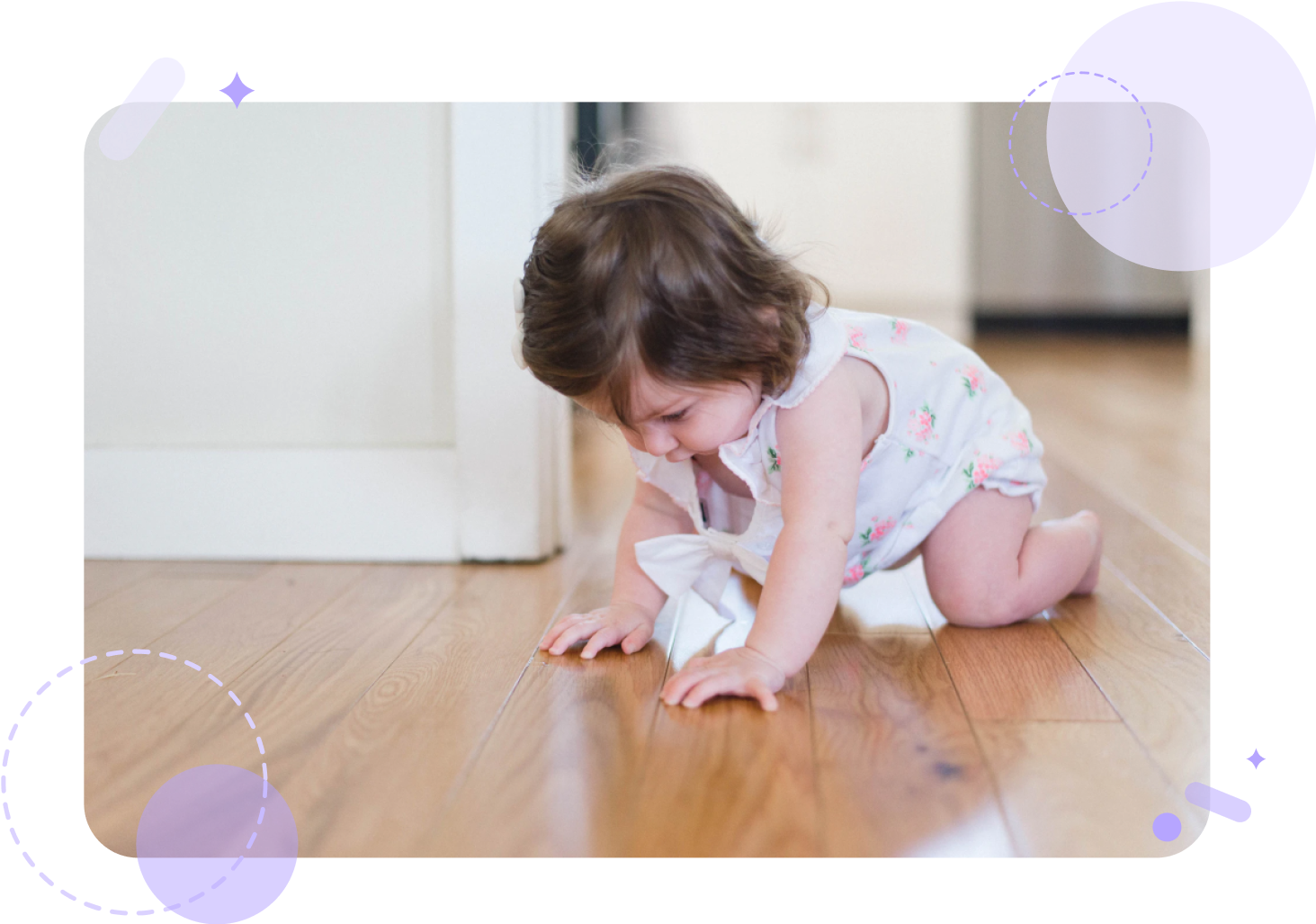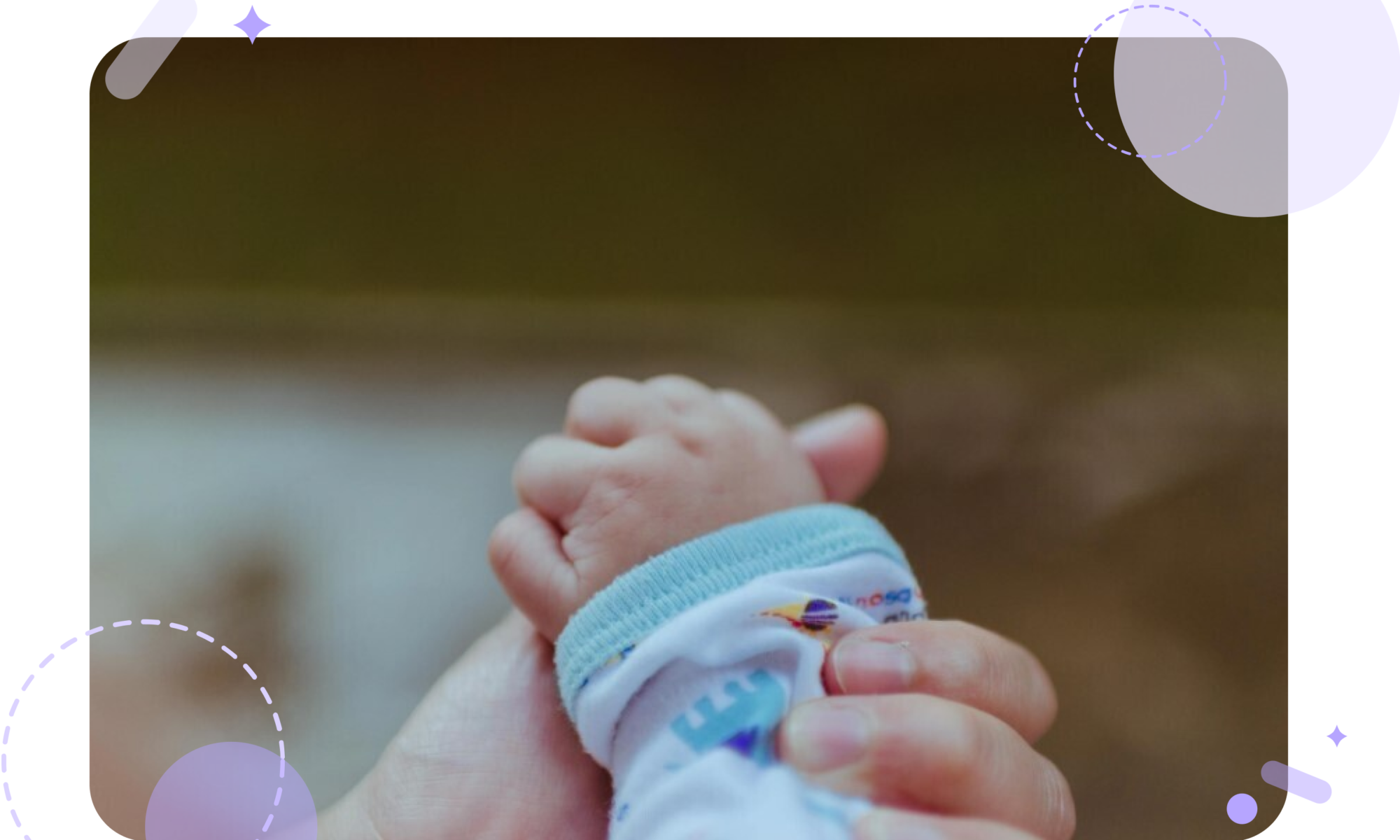
Babies need all the muscle power they can get to do even the little things, like raking their fingers to grab objects or bringing their hands to their mouth. Babies build muscular strength gradually and need lots of practice to develop their muscle movements fully.
Babies spend a considerable amount of time inside mom’s tummy, where there is increasingly limited space as the weeks go by, particularly in the final trimester. But once they are born, they have all the space in the world! Having unrestricted space outside the womb marks the beginning of your baby’s exciting muscular development process.
Newborn muscles development also demands stimulation, often starting with arm and leg movements, and your baby’s ability to maintain body posture and resistance to gravity. At first, newborns have little to no muscle strength, but given the space and stimulus they need, your baby’s muscle skills will grow at an incredible pace!
These early explorations set the foundations for their muscle growth, establishing initial ranges of motion, and driving the development of more intricate muscle functions.
What Can You Do to Help?
Even though babies constantly explore their motions, muscle movements require a considerable amount of fine-tuning to build strength and improve control. Parents and caregivers can try the following simple at-home activities to help your baby on their muscle defining journey.
Provide Safe Spaces and Freedom
Your impulse to jump at every opportunity to hug, swaddle, or cuddle your baby is completely understandable. As your little one grows, there may be moments where your constant physical contact gets in the way of their desire to explore. Try to provide plenty of freedom for your little one to safely move around and discover what they can do with their hands, legs, neck, and whole body.
You can even join in on the fun by getting down on their level, moving at their speed, and interacting with your baby on their terms. Your baby means the world to you, but to them – you are their world! While at play, feel free to demonstrate simple muscle movements and be sure to cheer for any progress along the way.
Keep Your Baby Engaged
Babies learn best when they are engaged, so try to attract your baby’s attention by stimulating them in a way that will get them to use their various muscles. For example, take advantage of their love of a certain toy, object, or face (most likely yours!) and move it around the room so that they can track it, which helps improve head control and neck strength.
Once your baby learns to track objects with their eyes, you can start experimenting with different distances, directions, and movements that will demand engagement from other muscle groups within the arms, legs to encourage development beyond the eyes, head, and neck. Isn’t it fun one simple, playful movement can help stimulate and strengthen so many muscles?
Lend Your Baby a Hand
Babies tend to flourish more when they know that their caregivers are there for help and support. Your encouragement helps your baby feel secure in taking their next steps in development. Helping hold your baby as they practice new movements is a great way to build their confidence as well as their muscle strength.
Between 1 and 3 months old, for example, you can support your baby while they sit in an upright position or gently pull your 4 to 7-month-old baby to a standing position. Assists like these help your little one understand how their body functions and balances while promoting correct foot, trunk, leg, and neck muscle usage.
A Little Resistance Goes a Long Way
Once your baby has a handle on some basic muscular movements, you might consider gently providing some resistance to further refine their skills. Small moments of resistance to your baby’s hands or legs help improve muscle control – and a little goes a long way!
For example, when your little one starts grabbing objects like a rattle, you can tug gently to let your baby feel the resistance and maintain their grip. Once they can use their hands and fingers to grab on to objects like a rattle, you can tug on to oppose their movement very gently. Your baby’s resistance shows that their muscles are indeed growing stronger!
Playful activities help provide your baby with the physical stimulation required to build up muscle fibers (strength), tone, and control. Increased muscle control becomes more evident as your baby grows more active and skillful. Given plenty of chances to play, your baby will demonstrate different muscle movements with increased frequency, length, complexity, and even speed.
 Back
Back